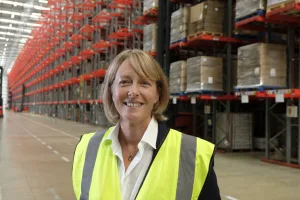The three top barriers to the next generation of supply chain professionals
The supply chain and logistics sector faces a major human resources challenge in the coming years. By 2017 the industry needs an additional 500,000 highly skilled individuals, trained and qualified, to address the demands of increasingly sophisticated supply chains. However, as an industry we are failing to attract the next generation of bright young things and this comes down to three key barriers.
The image gap
Young people have little or no understanding of what logistics and supply chain management is all about. The general perception is of trucks and sheds, and this is reflected in the images with which we choose to portray our industry. These images may be pertinent to showing physical logistics activity, but they fail to convey the critical and strategic role supply chain management now plays in the economic performance of the business.
Leading companies in retail, manufacturing and the service sector, must lean towards using imagery and language that reflects the exciting ‘game changing’ nature of modern supply chains – how intellect and technology combined can transform the value proposition to the customer – from multi-channel retailing, to global sourcing and niche manufacturing. We must communicate to our young that supply chain management is as important to the business as marketing or finance, and is a valued profession where financial rewards can be high and a pathway to the boardroom is open.
Education and entry points
To ensure supply chain and logistics becomes a tangible career option for young people it needs to be ‘made real’ to them as they progress through the educational system. At school the curriculum for GCSE and A Levels should include elements of supply chain management, particularly within business management, geography and economics modules. After all, globalisation and international supply chains are intrinsically linked.
It is through our schools that the young should learn of the importance of supply chains in creating wealth, driving commerce and developing competitive advantage. Teachers and Career advisers need also to be briefed as to the rich opportunities that our profession offers school leavers, through either moving into corporate management training schemes, apprenticeships or taking a degree course dedicated to logistics and supply chain management.
Supply chain and logistics should also play a bigger part in general business management courses at university. Given the number of organisations across the UK that has a direct interest in running highly efficient supply chains, bringing 2000 graduates into the industry on an annual basis should be an easily achievable target. But businesses need to create those graduate posts.
Need for clearer definition of job function
Supply chain management is an activity that touches so many other parts of the business that setting out what the job entails is difficult. For young people it may appear complex and mystifying, however, as a sector, we have the important task of explaining to the next generation exactly what is involved – from planning, execution and compliance, to collaborating with internal departments and suppliers. And we need to be clear to young people what we are looking for in terms of skills – the ability to communicate well, solve problems, use IT effectively, demonstrate leadership, show organisational skills and apply a creative mind. But, above all else, we need to enthuse and excite in order to create the motivation that will make young people want to select logistics and supply chain management as a career for the future.
If we can overcome these barriers, then we will be opening the way to the next generation of supply chain gurus.
Andy Kaye is CEO of management recruitment company, BiS Henderson, and founder of The NOVUS Trust Logistics and Supply Chain BSc degree course.






